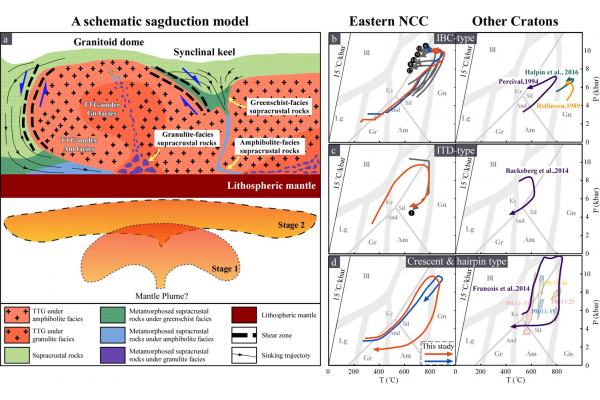COEXISTING DIVERSE P-T-T PATHS DURING NEOARCHEAN SAGDUCTION: INSIGHTS FROM NUMERICAL MODELING AND APPLICATIONS TO THE EASTERN NORTH CHINA CRATON
Seminars
Semester 2
The Eastern Block of the North China Craton preserves a Neoarchean greenstone-granite rock association with dome-and-keel structures. Metamorphic data for these rock assemblages exhibit both anticlockwise P–T paths involving near-isobaric cooling (IBC) and clockwise paths with nearly isothermal decompression (ITD), leading to conflicting interpretations. To understand the coexistence of diverse P-T paths and establish a plausible geodynamic regime, we conducted 2D thermomechanical numerical models mirroring the conditions of the Neoarchean eastern North China Craton. Our model results reveal that heat transferred from the high-temperature lower boundary and crustal density inversion leads to crustal-scale sagduction that generates the observed dome-and-keel architecture and results in four major types of P-T-t paths. The dome-and-keel architecture and P-T-t paths produced by the numerical model conform to the structural, metamorphic and geochronological data of the Eastern Block. We propose that the geological complexity of eastern China and temporally coexisting diverse P-T-t paths most likely developed under a mantle plume related crustal-scale sagduction geodynamic regime in Neoarchean.
Additional information: Ms. Chenying YU, yuchy3@connect.hku.hk










